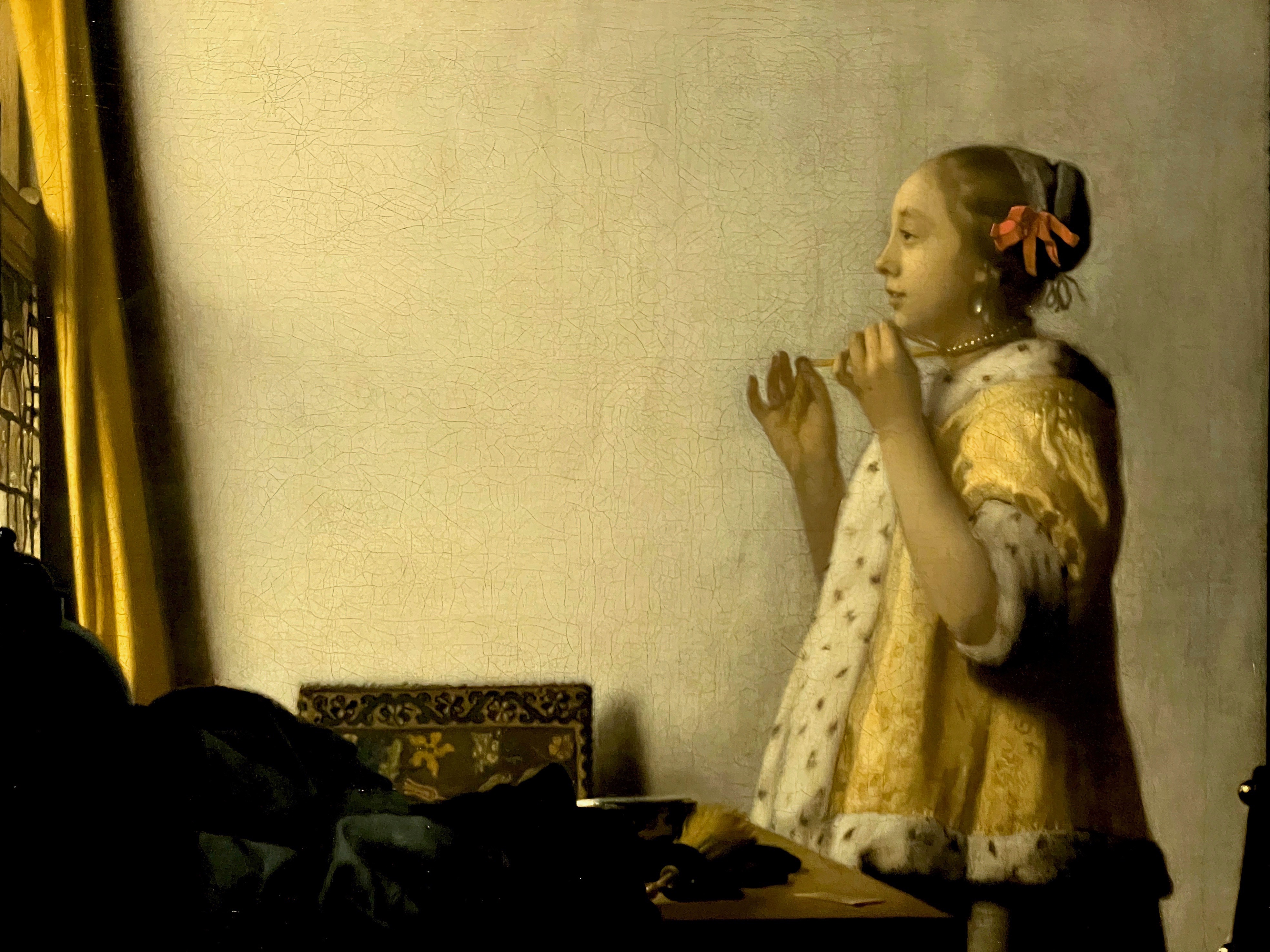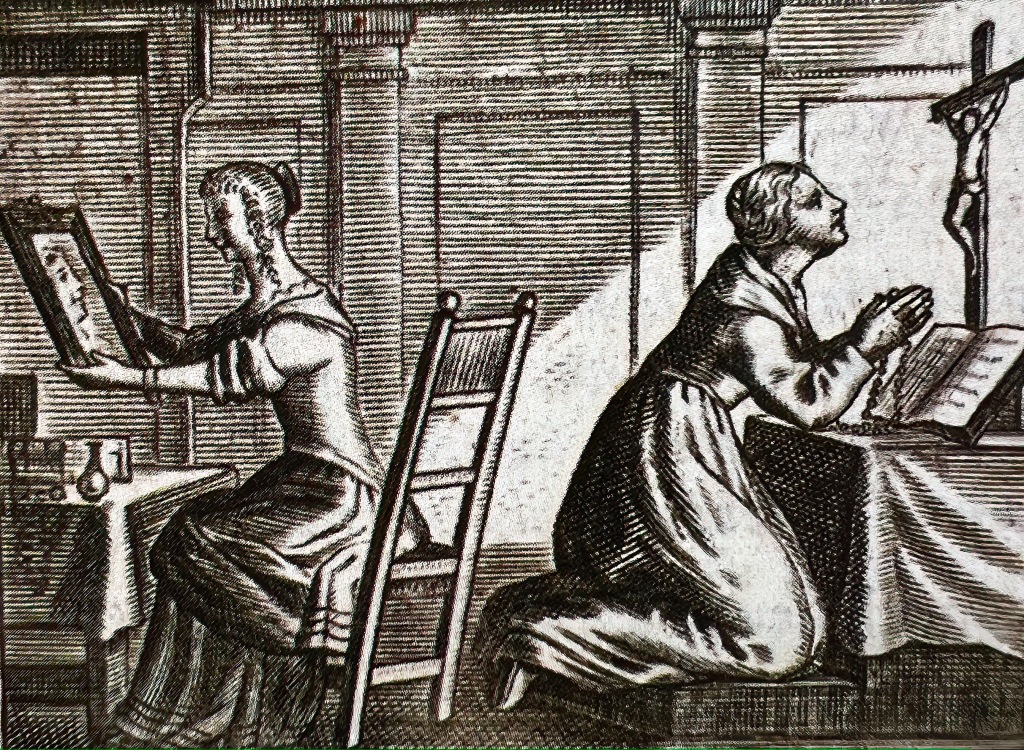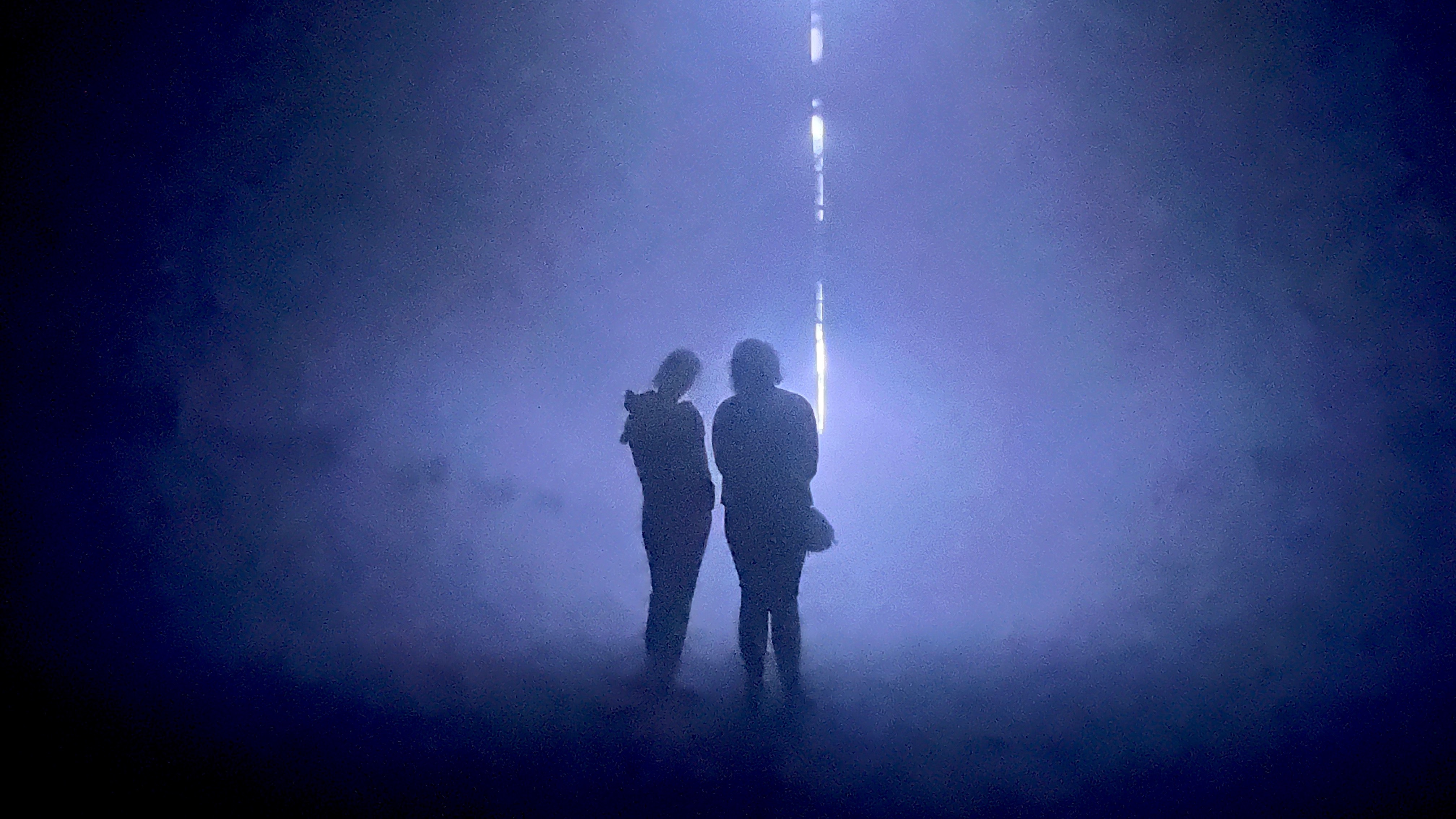
What is your most precious possession? This was the question posed by two British artists in their random encounters with strangers at the Venice Biennale. For three days in April, Neil Musson and Jono Retallick wandered about the art festival venues literally clothed in the question, printed in various languages on their white smocks. Whenever a curious glance at their outfits prompted conversational engagement, the artists recorded whatever answers people chose to give. From more than fifty responses, the artists will edit the results to post on their website, M+R, in the near future.

(Photo by Neil Lambert)
It’s a great question! In my monthly Zoom converation with longtime clergy friends, Jono made a guest appearance from the Venice apartment of one of our members.[i] When he invited each of us to name our most precious possession, no one selected a material object. David, a gifted writer and preacher, chose the stories he’s lived—and lived by—over a lifetime. Richard cited his sense of humor, which has never deserted him even when laughter was scarce. Mark, who in his eighties finds himself, as he put it, “in the process of disappearing” as time grows ever shorter, said that what he values most is “now”—the savored fullness of the present moment.
I’m still working on my own answer. The first thing I told Jono was that since everything we are and everything we have is a gift—from the Creator of all as well as the secondary causes of heredity, culture, and the labor of others—it could be said that we in fact possess nothing. But that seems a bit of a cheat, a way to avoid the work of values clarification. The question wants me to think: Where does my greatest treasure lie? What would be the hardest thing to lose?
I’ve known people who had only a few minutes to flee their homes in the path of racing wildfires. And I’ve wondered: If I were in that situation, what irreplaceable items would I grab before running out the door? The box with 50 years of journals? An album of family photographs? The Theotokos icon painted for us on a Greek island? The wooden moon carved by a First Nation artist in Canada? A guitar once played by the legendary Ramblin’ Jack Elliott? It’s only stuff of course, but the things we love best are saturated with stories. They are outward and visible signs of inward and beloved memories. I would feel the poverty of their loss. But I would not call them “most precious.”[ii]

All of us, of course, would reserve “most precious” for our deepest relationships—with God, lovers and friends. But it would violate the integrity of their otherness to deem any of these to be possessions. So I must look elsewhere for my answer to the question.
Good health comes to mind, or even life itself. These are certainly very highly treasured—but as gifts to enjoy, impossible to possess. As the Psalmist reminds us, we are “but flesh, a breath that goes forth and does not return” (Psalm 78:39). We all must learn to loosen our grip in this transitory life.
He who binds to himself a joy
Does the winged life destroy
He who kisses the joy as it flies
Lives in eternity’s sunrise— William Blake. “Eternity”
I could call faith my most precious possession, for without it I would be hopelessly adrift in a sea of unmeaning. But faith is a communal possession. It is not distinctively mine. Faith is plural, shared and nourished within the collectivity of God’s friends. If I am to speak in the singular, to name what is uniquely mine, I would say that my most precious possession is my imagination—the particular way I see the givenness of the world, processing it within my own heart and intellect, then reflecting my perception back into the world in some fresh way, whether that be in the form of conversation, writing, art, or simply as praise and thanks for a world of beauty and blessing (or lament and protest in the case of suffering and evil).

“Make visible what, without you, might never be seen,” said Robert Bresson, who made films unlike any other. As one critic put it, “Bresson’s films are not merely the most lucid; they are, in essence, lucidity itself.”[iii] Perhaps only the saints attain “lucidity itself,” but each of us has our own unique way of seeing and being. And I imagine that God finds equal delight in what each of us has to report from our respective locations in a universe of infinite possibility.

Venetian woodcut by Francesco Marcolini (1544).
Light the first light of evening, as in a room
In which we rest and, for small reason, think
The world imagined is the ultimate good.
This is, therefore, the intensest rendezvous.
It is in that thought that we collect ourselves,
Out of all the indifferences, into one thing:
Within a single thing, a single shawl
Wrapped tightly round us, since we are poor, a warmth,
A light, a power, the miraculous influence.
Here, now, we forget each other and ourselves.
We feel the obscurity of an order, a whole,
A knowledge, that which arranged the rendezvous.
Within its vital boundary, in the mind.
We say God and the imagination are one…
How high that highest candle lights the dark.
Out of this same light, out of the central mind,
We make a dwelling in the evening air,
In which being there together is enough.
— Wallace Stevens, “Final Soliloquy of the Interior Paramour”
[i] The Rev. Neil Lambert, an Anglican artist/priest at St. Mary’s, Ash Vale, UK, has collaborated on some previous projects with Musson and Retallick. For more on Lambert and Venice, see Dreaming the Church That Wants to Be.
[ii] In a time when the people of Gaza, Ukraine and many other places are being dispossessed of nearly everything, I am not entirely comfortable talking about the things I have due to my privilege. Situations where the most precious possession might be a loaf of bread, a bottle of water, or a bomb shelter shatter all complacency.
[iii] Sharad Raj, “The Austere Ascetic,” Just Cinema website, Dec. 18, 2020 — https://www.just-cinema.com/post/the-austere-ascetic-by-sharad-raj
M+R, the webstie of artists Neil Musso and Jono Retallick, is well worth a visit. They are exploring creative ways to transform the way we experience public spaces and social interaction.





















